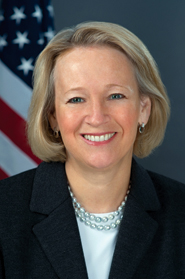The Securities and Exchange Commission in September proposed to eliminate a loophole in a prominent industry rule that would, in effect, ban marketable flash orders on equities and options exchanges. The unanimous vote by the five commissioners capped a summer-long fight in the media, among the public and on Capitol Hill about whether flash orders should be allowed.

SEC Chairman Mary Schapiro said in September that "flash orders have the potential to discourage publicly displayed trading interest and harm quote competition among markets." She also said the presence of flash orders could create "two-tiered markets" in which some market participants have access to information that is not available to the broader public market.
NYSE Euronext and market-making firm GETCO have criticized flash orders. Direct Edge has argued that they should be allowed as long as they’re voluntary order types. Nasdaq Stock Market and BATS Exchange launched flash orders last June and withdrew them later in the summer in the wake of public outcry.
Representatives from the Managed Funds Association, a hedge fund industry group that does not support the proposed ban on flash orders, met with SEC officials in September. Jim Rowen, an executive from hedge fund Renaissance Technologies, also attended the meeting. According to the SEC’s notice about the meeting, Rowen agreed with the MFA position, adding that the SEC’s focus should be on "inhibiting abusive market activity that can result from particular order types," rather than resorting to a ban on those order types.
Earlier that month, Schapiro and the other four commissioners rolled out their list of concerns about flash orders. Most notable was the lack of discussion about the prospect that using flash orders could harm the execution quality of those investors employing that order type. One reason may have been the revelation at the SEC’s open meeting that those using these orders on Nasdaq and BATS were, by and large, not retail traders but high-frequency trading firms.
The main regulatory concerns highlighted were the potential impact flash orders could have on incentives to quote aggressively in the displayed market, and the prospect of two-tiered markets for information. Schapiro stressed the "unfairness" that results when firms that are not quoting the best price can nonetheless rely on information from publicly displayed quotes to execute against aggressively priced investor orders.
A flash order is a marketable order sent to a market center that is not quoting the industry’s best price or that cannot fill that order in its entirety. The order is then flashed to recipients of the venue’s proprietary data feed to see if any of those firms wants to take the other side of the order. This practice enables the market center to try to keep the trade.
Flash orders are currently allowed under an exception to Rule 602, or the Quote Rule, in Regulation NMS. The Quote Rule requires market centers to publicly display their best prices. The exception offers an out for orders that are withdrawn and not executed immediately.
According to the SEC, the exception was adopted in 1978 when trading was done manually on floor-based exchanges. "In today’s highly automated trading environment, the exception for flash orders from quoting requirements is no longer necessary or appropriate," said James Brigagliano, co-acting director of the SEC’s Division of Trading and Markets, which proposed the amendment. The comment period for the SEC’s proposed rule on flash orders ends this month.
(c) 2009 Traders Magazine and SourceMedia, Inc. All Rights Reserved.
http://www.tradersmagazine.com http://www.sourcemedia.com/






